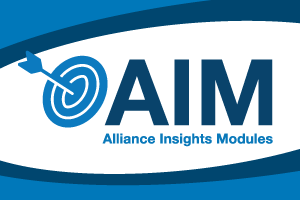
The Aligned Board By Larry Johnston
The notion of alignment has shaped my thinking about nonprofit organizations for many years. While somewhat intuitive at one level, intuition alone isn’t enough to align the management of nonprofits. It would be best to have precise, practical tools and no small amount of wisdom, sheer grit, chutzpah, and dogged persistence.
What continues to astonish me is how nonprofit boards appear exempt from thinking about organizational alignment. More specifically, how aligned is the board’s structure, composition, and function to the organization’s strategy? More specifically, how well does the composition and function of the board reflect your organization’s Key Result Areas (KRAs) or your organization’s value proposition?
To my way of thinking, those are embarrassingly fundamental questions but counter-paradigmatic in much of the ministry and nonprofit world. Abraham Maslow’s words ring true here: “When the only tool you have is a hammer, you treat everything as though it were a nail.”
Anachronistic and often counter-strategic notions of why nonprofit boards exist continually remind me that we don’t think about our paradigms as much as we feel about them. Seeing only what our paradigms allow us to see, organizations limp along (and often are even held hostage) to woefully inadequate ways of thinking about boards. As the adage puts it, “Having no concept of diamonds, we settle for glass.”
To keep things simple, I’ll avoid the issues here of how board paradigms should evolve as nonprofits grow through different stages of their lifecycles. For now, let’s stick with the basics.
First off, it is my assumption, obviously not universally shared, that boards exist to create value. Yes, they exist because legally they must, but beyond the obvious legal requirements, let’s hit the reset button and think strategically and functionally about boards. Beyond meeting legal requirements, how does your board demonstrably create value for the organization and those it serves?
If you’ve done your strategic homework, well-defined organizational KRAs should provide insight here (see my article, “To Manage It, Measure It,” in our Resource Center for related insights). But don’t assume a high degree of correspondence between organizational KRAs and board KRAs. The former should inform, not prescribe, board KRAs.
Some organizational KRAs, for example, especially in programmatic areas, are likely to be the primary, if not the sole, province of staff experts, and value creation by the board in these areas will be understandably limited. Conversely, when it comes to nonprofit fundraising, especially significant gifts, well-chosen board members should be able to leverage their networks to open doors of influence and affluence that will be well beyond the social networks of most staff.
Assuming you’ve identified board KRAs – what are the specific (no more than a handful) functional areas in which board members can create the most value – how many board members do you need in these areas to maximize value creation?
If you have a reasonably detailed blueprint showing desired bench strength versus current bench strength, you can monitor your strategic readiness in each area with the well-known stoplights: green, yellow, and red, based on the gap size.
In a nutshell, your strategic goal is to “Go green” across the board. Get there, and you’ll likely have something scarce: an aligned board.
###
Larry Johnston is the president of McConkey-Johnston International, where he has spent 40 years working with leading Christian organizations, consulting internationally in fundraising, strategic management, organization development, and leading and managing change.




